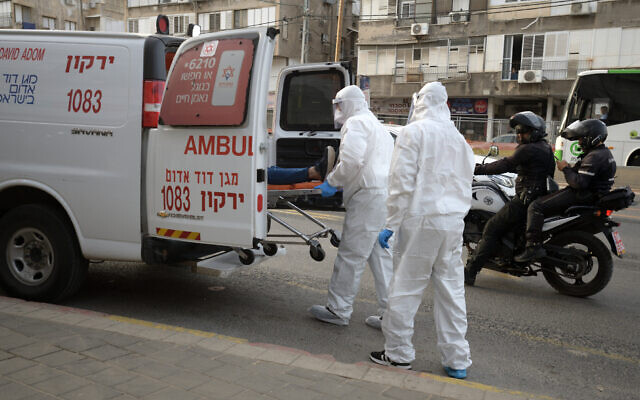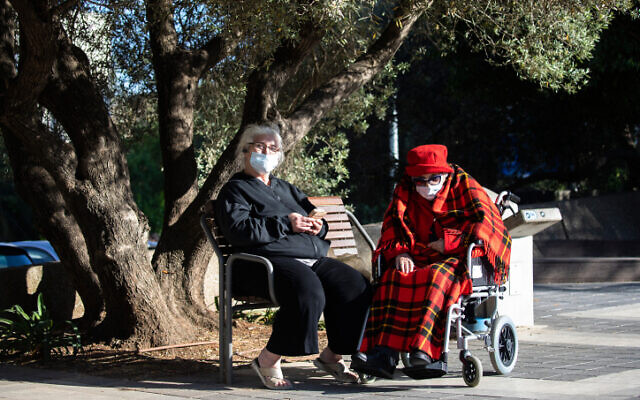According to TV report, data compiled by Clalit Research Institute indicates those in higher danger from virus are taking greater precautions during the latest coronavirus surge

The new wave of coronavirus infections sweeping the country is so far causing less serious illness than the initial stage of the pandemic, largely as a result of at-risk populations taking greater precautions to protect themselves, according to an analysis by a top healthcare provider.
Though Israel’s infection rate has soared to some 1,200-1,400 new cases a day in recent days, the percentage of serious cases has been far lower.
For example, at the height of the first wave in mid-April, some 180 of a total 9,800 active cases were considered serious, or about 1.8 percent. On Saturday, 134 of 18,296 cases were considered serious, or about 0.7%.
Data provided to Channel 12 news Saturday by the Clalit Research Institute — which belongs to Clalit Health Services, Israel’s largest health maintenance organization — showed that a major factor in the generally milder illness numbers was lower rates of infection among at-risk groups.
In the highest risk group — people over 70 with four or more risk factors (such as diabetes, heart and lung disease, compromised immunity etc.) — the rate of infection had dropped from 5.5% of total patients during the first wave to 3.3% during the second, a decrease of some 40%.
In the high-risk group, lower than the highest-risk category due to younger age yet still in danger over chronic health issues, the rate of infection dropped from 18% of total patients to 13%.
However, the analysis also showed that there was no significant change in the prognosis for those infected: at-risk populations that got sick were experiencing serious illness at the same rates as before.

The institute attributed the lower rates of infection among those most in danger to people at risk being far more cautious during the current wave and taking greater steps to protect themselves.
With hospitalization rates taking a few weeks to show a rise following increases in cases, the Health Ministry on Thursday told hospitals to prepare for a coming influx of patients. Health officials reportedly expect serious cases to rise significantly in the coming days — whether they remain low as a percentage of the general case count remains to be seen.
On Saturday evening the Health Ministry reported 1,198 new coronavirus infections over the past 24 hours, and three additional fatalities, bringing Israel’s overall death toll as a result of the pandemic to 354.
There are currently 134 people in serious condition as a result of the COVID-19 disease, with 49 requiring mechanical ventilation. Another 102 people were listed in moderate condition with the rest having mild symptoms or asymptomatic. A total of 25,256 coronavirus tests were conducted between Friday and Saturday evening.
According to the latest figures, Israel’s number of active infections stood at 18,296 with total cases at 37,464. As of Saturday, 18,814 people have recovered, according to ministry records.
A number of lockdowns came into effect on Friday in neighborhoods in five towns and cities hit hard by the coronavirus outbreak. This measure came a day after cabinet ministers approved the closures as the number of new cases in Israel continued to surge.
As of Friday, parts of Jerusalem, Beit Shemesh, Lod, Ramle and Kiryat Malachi are “restricted zones,” with the restrictions set to be lifted at 8 a.m. on July 17.
The last few weeks have seen the reversal of many of the gains made in the fight against the coronavirus in recent months. The country had been placed on a nationwide lockdown for several weeks at the start of the outbreak in mid-March, but removed most of its restrictions by May to reopen the economy.
As reported by The Times of Israel
